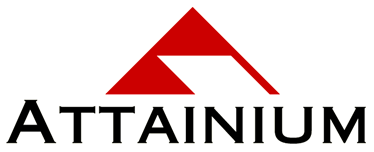Attendees cite stimulating format, importance of focus on people, and need to test plans as major benefits of session
From their origins, credit unions were unique non-profit depository institutions created to serve members as credit cooperatives. The earliest financial cooperatives date back to the beginning of the 19th century and were volunteer-based.* In today’s credit unions, the volunteers are the boards of directors, not the staff, and they need to be trained in disaster response as thoroughly as staff members do.
Credit union associations conduct regular volunteer development and education programs throughout the year to provide training for various board members, CEOs, and other management personnel. Attainium’s Disaster Experience was selected for the Massachusetts Credit Union League’s spring conference, in light of the recent impacts of Hurricanes Katrina and Rita.
"While most credit unions are fully prepared for IT, communications, and money flow in the event of a disaster, they, like many organizations, are underprepared for loss of leadership and the impact of any disaster on employees," said Bob Mellinger, Attainium president and chief executive officer.”
“Our plan was more focused on IT, business processes, and the building, but we made the assumption the staff would be okay,” said Kim Quinn, chief operating officer for the Southbridge Credit Union. “The exercises really brought home staff issues… how do you prepare staff for a disaster? what if the staff can’t get to work? how do you compensate for fewer people? Handling the human element was an important takeaway from this session.”
“Attainium’s approach to training of this type is more stimulating than a lecture because of its experiential nature,” Mellinger said. “It’s more engaging than just listening to someone talk to you.”
“Events unfolded as they would in real life… you didn’t know all the facts,” said James Sherman, president and chief executive officer, Brotherhood Credit Union. “Things kept changing as new information emerged, and you didn’t know how it was going to end. It was very realistic.
“You can’t assume you’re prepared for everything,” Sherman said. “You have to always expect the unexpected. You need to consider the safety of employees as well as the continuity of business operations.”
“Everything was believable,” Quinn said. “You’d certainly never want to be in such a severe disaster, but it does make you aware that anything can happen. We tend to think more about running the business than on the people in the organization… how they’ll respond, and the exercise made it clear that people should be the number one priority in the plan.”
“Nobody wants to find out in the midst of a disaster that there are holes in the life raft or the oxygen tanks don’t work,” Mellinger said. “Most plans sit on the shelf and collect dust, but plans should be dynamic. It’s important to test them periodically to make sure they work.
“One benefit of an exercise like this is that you learn to quickly assess the strengths of people around you and capitalize on those strengths,” Mellinger said. “Your crisis team may not be available when disaster strikes, so you need to work with the people who are available. There’s a comfort level you feel when people are challenged and rise to the occasion.”
“Working with my team during the exercise was valuable,” Sherman said. “Others look at the problem differently and apply different perspectives to the solution. It helps you to look at things in more than one way.”
“The MCUL participants were quick to focus on the major learning points of the exercise,” said Bob Mellinger, Attainium CEO, “particularly that people must be a priority. Also, the importance of maintaining and testing whatever planning is in place. A plan must be a living, breathing document. It takes time and effort to ensure that the plan is up to date and the staff has a complete understanding of what to do when they experience a disaster.”
# # #

